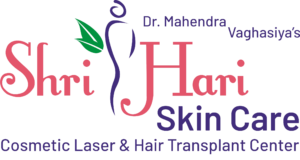
PIGMENTARY DISORDERS
WHAT IS PIGMENTARY DISORDERS?
Normal skin color depends on melanin, hemoglobin (oxidized and reduced), and carotenoids. Melanin is the major color determinant and is responsible for variations in skin color. Pigmentary disorders typically indicate an increased amount of melanin, leading to darker color of the skin, called hypermelanosis or hyperpigmentation. Decreased or absent pigment makes the skin appear lighter or white, known as hypomelanosis or hypopigmentation. The disorders can be genetic or acquired.
Skin pigmentation (coloration) disorders affect many people. Some of the most common problems are listed below.
Pigmented birthmarks
Nevus of Ota: Nevus of Ota is a type of dermal melanocytosis (excessive melanocytes in the tissues) that causes the hyperpigmentation of an eye and the surrounding area. It often takes the form of bluish or brownish pigment around the eye, along with this pigment appearing on the whites of the eye. Some individuals may also experience nevus of Ota on the forehead, nose, and cheeks. Others can experience it in the irises or whites of their eyes.
Mongolian spots: These birthmarks appear bruised or bluish in color and usually develop on the back or buttocks of babies. This discoloration usually disappears by age 4 and does not need to be treated.
Café-au-lait spots: These are light brown-to-dark brown flat spots with smooth or irregular borders. About 10% of the general population has 1 or 2 of these spots, and do not have another disorder that is related to it. However, 6 or more of these spots that are greater than 0.5 cm in diameter can be associated with the genetic disorder neurofibromatosis.
Nevi (moles): These spots may be flesh-colored to light-to-dark brown. They may be flat or raised. Although most moles are benign (non-cancerous) and will not cause any problems, some may change and become a skin cancer called a melanoma. For this reason, moles should be watched for bleeding, pain, itch, color, shape, symmetry, even borders, and size changes.
Vascular birthmarks (from blood vessels)
Macular stains: Macular stains appear anywhere on the body as mild red marks, but they are not elevated. They are the most common type of vascular birthmark. They can come in two forms: “angel kisses,” which may appear on the forehead and eyelids and usually disappear after age two; or “stork bites,” which will appear on the back of the neck and can last into the adult years.
Hemangioma: Hemangiomas are growths that are made up of many tiny blood vessels bunched together. Some hemangiomas are more serious. They are more common in females and premature babies. This birthmark is usually just a small mark on the face, trunk, or extremities (arms and legs). However, in some children, hemangiomas can be large and grow rapidly through the first year of life.
Port wine stains: A port wine stain appears as a flat pink, red, or purple mark on the face, trunk, arms, or legs, and lasts a lifetime. Port wine stains are caused by abnormal development of blood vessels (capillaries). Over time, the port wine stain may become raised and thickened. Port wine stains on eyelids are thought to pose an increased risk of glaucoma.
Skin pigmentation disorders
Albinism: Albinism, an inherited disorder, is caused by the absence of the pigment melanin, and results in no pigmentation in the skin, hair, or eyes. Albinos have an abnormal gene that restricts the production of melanin.
Melasma: Melasma (also known as chloasma) is marked by tan or brown patches that may appear on the forehead, cheeks, upper lip, nose, and chin. Although this condition is often called the “pregnancy mask,” men can also develop it. It may also occur in women who are taking birth control pills or postmenopausal estrogen.
Post-inflammatory hyper- or hypopigmentation: If you have had a skin infection, blisters, burns, or other trauma to your skin, you may have a decrease or increase of pigmentation in the affected area. This type of alteration is usually not permanent, but may take up to several months to fade or get better.
Vitiligo: Vitiligo is a condition where the body’s immune system attacks pigment cells (melanocytes), causing pigment loss. Vitiligo causes smooth, white skin patches, usually around the mouth and eyes, or on the back of the hands. In some people, these patches can appear all over the body.
TREATMENTS
Treatments depends on the types of pigmentation, area, etc. Combinations of treatments are required to treat above mentioned conditions with medications, laser treatments, photo therapy etc.
Make an Appointment
For appointment or any question contact us to make an appointment with Surat leading dermatologist Dr Mahendra Vaghasiya. Equipped with many years of experience in treating patients with various types of PIGMENTATORY DISORDERS, he will evaluate your condition and discuss the treatment options with you. You may also send an email by filling Enquiry form at https://shrihariskin.com/contact and our team will respond to your questions or appointment request as soon as possible.


